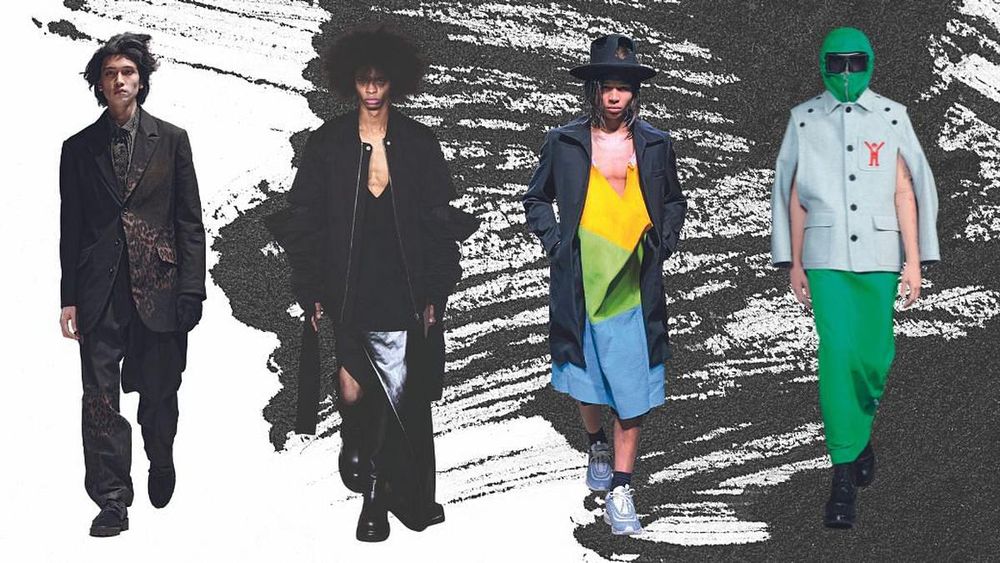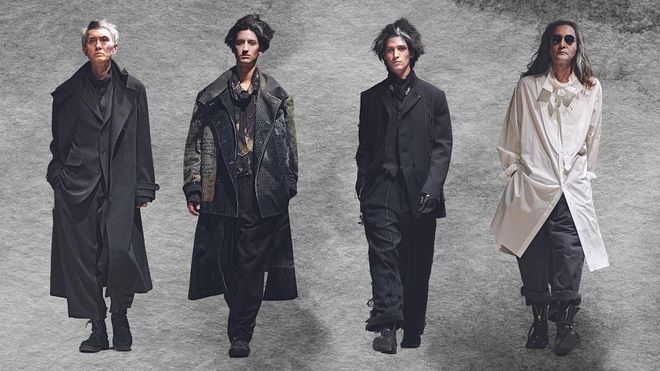The Mavericks Marching To The Beat Of Their Own Drum And Bringing To Life New Ideals Of Beauty
Icons and iconoclasts.

In an industry obsessed with change and newness, sometimes the most daring thing to do is to stick to one’s guns. Some of the most visionary designers working today are the ones who have held fast to their aesthetic vocabularies and values for decades—unwavering in how they want to see the world regardless of the flow of time and trends around them. On the back of their singular visions, designers like Rick, Rei and Yohji (so influential that they are recognisable just by their first names) have built cult-status brands that are commercially successful, critically adored, and creatively uncompromising—all while remaining independent in a conglomerate-dominated industry.
When they first arrived on the scene, these designers were a shock to the system. While their visual handwritings are by now familiar, their work still carries the thrill of something wondrous. Even today, the beauty they have championed their entire careers remains outside convention though their conviction, and how it carries through in every aspect of their brands, is looking more and more compelling in an increasingly homogeneous market. Season after season, Rick Owens, Rei Kawakubo, Yohji Yamamoto and Walter Van Beirendonck receive outsized attention. Their work might be bold and unapologetic, but they are not mere theatrics—the clothes are packed with meaning and emotional resonance, lending them not just relevance but urgency.
Through the medium of cloth, these designers explore ideas of gender, fashion and beauty, as well as issues cultural, sociopolitical and personal. Their visions are all-encompassing—these designers don’t just think about how garments look on the body, but how those bodies exist, move and take up space in the world. In some cases, their visions are so fully realised that they have built entire universes in which to contextualise their clothes—such as Owens, with his furniture and objects for the home; or Kawakubo, with her global network of Dover Street Market stores.
Rick Owens

Photos: Showbit
Rick Owens Maverick
An American in Paris, Owens is a designer that one cannot fit easily, if at all, into a box. Like the best of American sportswear, his clothes are built with an innate sense of athleticism and movement. But instead of sunny and breezy, Owens’s vision is dark, twisted and severe—think techno club instead of country club. It is an aesthetic he has honed since he started his brand in the early Nineties—part silver screen glamour, part Brutalist edge; Madeleine Vionnet meets Edward Scissorhands. In the noughties and early 2010s, Owens’ shrunken leather jackets, drop crotch pants and mutant sneakers were everywhere. Today, the designer has evolved his exploration of volume to focus more on giant-shouldered coats that protect the body; and kinky, slinky pieces that show it o . The throughline is Owens’ alluring blend of the primal and paganistic with the futuristic and synthetic—peppered with a touch of the grotesque. Headed by his wife and partner, Michele Lamy, the Rick Owens line of furniture extends that aesthetic into the world of interiors.
Comme Des Garcons

Photos: Courtesy
Comme Des Garcons Maverick
The arrival of Rei Kawakubo in Paris in the early Eighties ushered in a look that went against every established fashion notion that prevailed then. While the likes of Claude Montana and Thierry Mugler were amping up colour, blowing up shoulders, cinching waists and chopping off hemlines, Kawakubo—and later a cohort of her fellow Japanese designers—presented silhouettes that were strange and misshapen to the European eye, rendered in sombre, monochromatic black. In the decades since, Kawakubo has, through her work at Comme des Garçons, questioned and erased the boundaries between fashion and art, male and female, past and present, garment and sculpture. Her latest collection sees leopard print laid over camo, corduroys worn with silk fringe, and pyjamas hybridised with fetish leathers.
Yohji Yamamoto

Photos: Showbit
Yohji Yamamoto Maverick
Yamamoto made his way onto the international fashion scene shortly after Kawakubo, and like her, he was enamoured with the colour black and its infi nite variations. Yamamoto was also interested in expanding society’s idea of masculinity and male beauty. Long before diversity became an industry buzzword, Yamamoto was already showcasing models of different ages, shapes and shades on his runways. He clad them in cinematic clothes that were both rugged and romantic, at once incredibly rich and impeccably restrained. Oversized suits may have been the look du jour the past few years, but they have always been part of the Yamamoto oeuvre; in his hands, they are always elegant, never comically exaggerated—which pretty much sums up the designer’s approach to fashion. The designer’s fall/winter 2022 collection riffs on 19th-century menswear, but imbues it with the nonchalance of 21st-century streetwear.
Walter Van Beirendonck

Photos: Showbit
Walter Van Beirendonck Maverick
Part of the Antwerp Six who gained prominence in the mid-Eighties, Van Beirendonck—with his cartoons-meet-couture aesthetic—has been one of the most impactful outsider voices in fashion. His might not be a household name but his legacy burns bright in the designers who came after him—whether it’s the ones he taught (at the Royal Academy of Fine Arts Antwerp) such as Raf Simons and Craig Green; or the ones he inspired, like Charles Je rey and Virgil Abloh. Much of what is trending today can be traced back to Van Beirendonck—the way classical codes can be turned on their heads by colour, cut and decoration; or the way serious subjects can be tackled through idiosyncratic clothes. Till today, the designer’s work is defined by an electric tension humour, whimsy and irony shot through with undercurrents of queer sexuality, fetish play and punk rock. In his latest collection, the designer melds sportswear with space gear, and menace with manga—to thrilling effect.